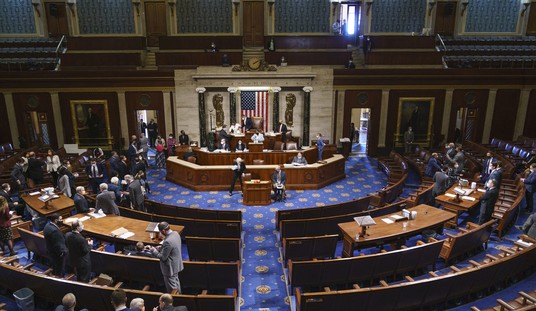More often than not, we judge politicians based on what they believe — or at least, what they say they believe — and not on what they actually do. It’s become a cliché: GOP candidates yapping, hectoring, fundraising, and cosplaying as hardcore conservatives, yet once they’re elected, their legislative record is swimming with swamp water.
Even the legislation they pass is mostly about intent. Republicans and Democrats don’t have much in common anymore, but we share our disdain for ironically-named bills and bogus-sounding laws. Donkeys and Elephants may bicker over how “fair” the Fairness Doctrine was, how “patriotic” the Patriot Act was, and how “affordable” the Affordable Care Act was, but we can all agree that at least one of ‘em was a flat-out lie.
Sometimes, the politicians were deliberately deceitful — lacing legislation with various poison pills (sabotage from the inside is exactly what so many lobbyists are paying top dollar for). Other times, the SNAFUs were unintentional: Writing laws that improves the lives of 340 million Americans is kinda tricky, and most political theories don’t works as predicted in the real world.
It beckons a serious question — one of enormous importance, yet is seldom discussed: How can we tell a good law from a bad law?
Furthermore, is it possible to develop a formula for “means testing” laws, to determine if they’re good or bad? After all, if Congress passes a law because there’s a problem — and if the law fails to fix it — the problem still exists.
And that’s a problem, too!
Because bad laws aren’t an innocuous, “oopsie!” thing. It’s not “no harm, no foul.” The opposite is true: There’s an extraordinarily high societal cost to bad laws.
The cost in legal/judicial/financial resources is obvious, but what lurks below the surface is often more expensive: Enacting bad laws creates a climate where people begin to distrust, disobey, and disregard laws — and not just the bad ones.
They also start to ignore the good ones.
There’s a domino effect: Nothing in politics — and nothing in life — happens in a vacuum.
So let’s return to the question: How can you tell a good law from a bad law?
To get the ball rolling, I’ll propose a simple, testable theory. (Please feel free to love/hate/mock it in the comments.) But first, I’d like to begin with the opposite perspective: What are the common traits of BAD laws?
For whatever reason, identifying bad laws is a lot easier than identifying good laws. Weird, huh?
Bad laws are simple to spot: Sometimes their intent is noble, but in practice, the law leads to chaos (i.e. Prohibition in the 1920s). Sometimes the law is inefficient and impractical, doing more harm than good (i.e. lots of business/environmental regulations). Sometimes the law leads to grotesque moral perversions (i.e. abortion, gender reassignment surgery for children).
And sometimes, even when the law works as intended, there’s a disconnect with the penalty: A sicko violently beats and rapes an innocent woman, but only stays a few months in jail. Or a deranged repeat offender keeps getting released, and murders an innocent Ukrainian woman.
Here’s my theory:
The litmus test of a good law is threefold — with each of the three parts in perfect proportion. It must be equally pragmatic, moral, and truthful.
Pragmatism goes to the cause and effect — how the law actually functions in society. Does it enhance safety and/or efficiencies? Using objective, quantifiable benchmarks, does it achieve the intended results?
If so, it’s probably a pragmatic law.
The moral part goes to good and bad, right and wrong. It speaks to a value system far more demanding than pragmatism, and that’s intentional: A purely pragmatic world — one that’s utterly indifferent to morality — would be a horrifying, soul-crushing monstrosity. Pragmatism is vital, but it’s a deadly cancer when not anchored to morality.
Morality is testable, too: A moral law, by definition, can never lead to an immoral outcome.
The third and final piece is truthfulness. This goes to the law’s purpose, reasoning, and penalty.
An untruthful law is based on lies and bull[expletive]. And it’s almost always a law with a penalty disproportionate to the crime.
To show how “tough” or “compassionate” they are, politicians like to arbitrarily increase or decrease a penalty. On the left, plenty of Dems are complaining about the incarceration rates of minorities, vowing to #DefundThePolice and release inmates from jail. And on the right, when a crime persists, a popular conservative refrain is to “fix” the problem by jacking up the penalties.
I understand the impulse, because some people really, truly do make decisions based on risk/reward. For them, their behavior directly correlates to the severity of the punishment.
But it’s still a poor way to construct a law, because the law’s primary purpose isn’t deterrence. Its primary purpose is to attach the appropriate penalty to a specific, nefarious act.
Deterrence can, in part, come from the law. But it should also come from society, culture, community, family, and more. When we contort the law beyond its proscribed purpose — using it as a reactive mechanism to combat crime trends, or as a tool to assuage racial guilt — we end up with penalties that are unbalanced, disproportionate, unfair, and out of whack.
And then it’s no longer truthful.
Unfortunately, the overwhelming majority of our social ills aren’t fixable by increasing/decreasing the penalty. They’re just not. And if we’re focusing on that, we’re focusing on the wrong thing!
So that’s my theory. The litmus test of a good law is threefold: pragmatism, morality, and truthfulness. If ANY of the three components are missing, you’ve got a bad law.
What say you?










